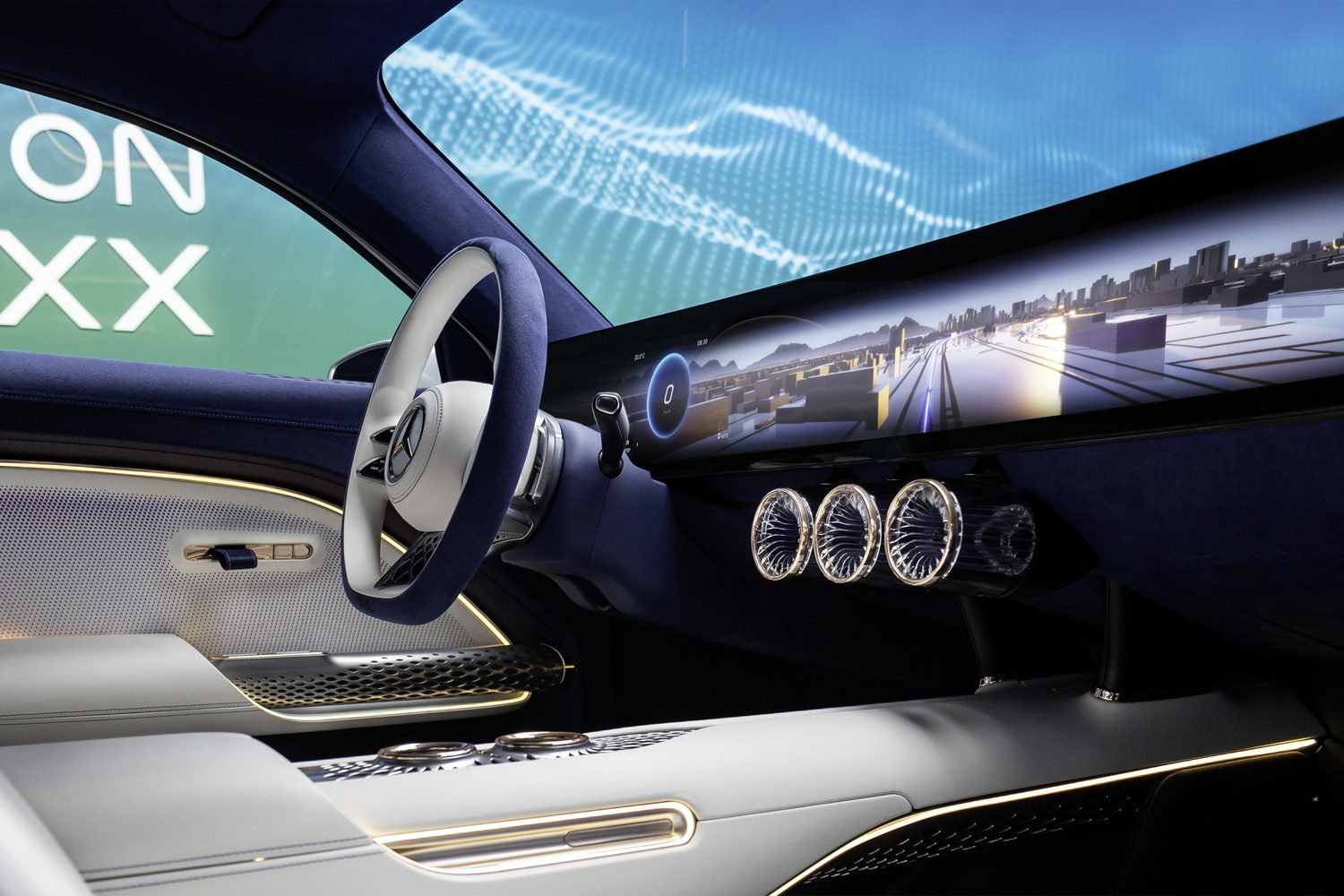Mercedes has revealed the Vision EQXX, a concept car intended to showcase what the company says is the future of the technology underpinning its electric cars. Instead of simply adding bigger and bigger batteries the focus is on eking the most efficiency out of cars though slippery aerodynamics, lower weight and better-designed, energy-dense batteries.
The result of this work is a concept car that, according to Mercedes's projections, can manage 1,000km on a single charge and an outstanding energy consumption figure of less than 10kWh per 100km. To put that into perspective, such a range could theoretically give the EQXX the ability to drive the equivalent of two round trips from Dublin to Cork. This is all the more impressive given the fact that the EQXX's battery is slightly smaller than the 107kWh unit used in the current Mercedes EQS model. So how has the company done it?
Slippery body
Most noticeable is the EQXX's body, which, with its low, sharp nose and smooth shape, achieves a minuscule drag coefficient of just 0.17, which, were this a production car, would be the lowest figure of any model yet seen. As well as a retractable rear diffuser, the EQXX features shutters on the bonnet that only open when the car needs significantly more cooling than normal airflow and thermal management can provide. The wheels and tyres have also been designed so as to reduce drag, allowing the car to push through the air using even less energy. Advanced as the teardrop-shaped body is though, the real technical wizardry has gone on under the skin.
Powertrain management
"Electric range sounds easy but is a complex technical challenge," said Joerg Bartels, Vice President for Vehicle Engineering at Mercedes. "The easiest way is to put a bigger battery in the car. However, this leads to diminishing returns due to size and weight. This is definitely not the smartest route and it's also not the best use of scarce resources. With the Vision EQXX, we're presenting the results of an extraordinary challenge: we pushed efficiency to a totally new level. And we explored new ways to increase the range of an electric car."
Starting with the battery, Mercedes has worked with its own High Performance Powertrains (HPP) division - the team behind its Formula One racing engines - to develop a battery with roughly the same capacity as that found in the EQS, but with a much higher energy density.
According to Adam Allsop, HPP's Advanced Technology Director: "In effect, we fitted the energy of the EQS into the vehicle dimensions of a compact car. The battery has almost the same amount of energy but is half the size and 30 per cent lighter. The battery management system and power electronics have been designed with an absolute focus on reducing losses."
"Losses" refers to a loss of energy between the battery and the wheels and, thanks partially to the design of the 100kW electric motor, the EQXX's powertrain is claimed to be 95 per cent efficient, meaning that 95 per cent of the battery's energy makes it to the wheels, up from around 30 per cent in an internal combustion-engined car.
One of the key ways in which the engineers achieved that was through effective thermal management. What heat the drivetrain generates is used, in conjunction with an advanced heat pump, to warm the cabin, while the drivetrain is usually cooled by air channelled underneath the car. Only in elevated temperatures or when the driver is feeling a bit "lively" do the air shutters on the bonnet open.
Weight reduction
The fact that there isn't very much heat to disperse means that there's also a weight saving in terms of cooling apparatus. Weight is a major factor keeping the EQXX's energy consumption down with the body made from lightweight steel, the doors made from glass-fibre and carbon-fibre reinforced plastics, and the brake discs made from aluminium. Single castings are used where possible to cut out the extra heft associated with using multiple joined parts and panels.
Topping it all off are 117 solar cells on the roof aimed at reducing the energy drain on the high voltage system and potentially increasing the battery range by around 25km. Energy from the solar panels is stored in a separate, smaller battery and used to power ancillaries such as the interior fan, the infotainment system and lights.
Made from mushrooms
The interior is a minimalist affair, making strong use of sustainable materials. The carpets, for instance, are made entirely from bamboo fibre. Meanwhile, vegan leather alternatives derived from mushroom and cactus structures reduce the environmental impact associated with animal-based leather. Other parts of the interior too use recycled plastics made from landfill waste. These days, minimalism tends to equate to screens galore and the EQXX is no different with a single seamless LED screen spanning the 47.5-inch entirety of the dashboard in pin-sharp 8K resolution. Even this is designed to be as energy efficient as possible with more than 3,000 local dimming zones meaning that parts of the screen are only lit up as needed.
Revealed ahead of the Consumer Electronics Show (CES) in Las Vegas, the Vision EQXX will, regrettably, not become a production car. Rather, it will remain a "road legal research prototype" with the ground-up technological approach and drive towards greater efficiency trickling down into Mercedes production cars. By 2022, the company says it will offer a fully electric model in every segment with, by 2025, every model sold being available with a pure-electric equivalent.












































